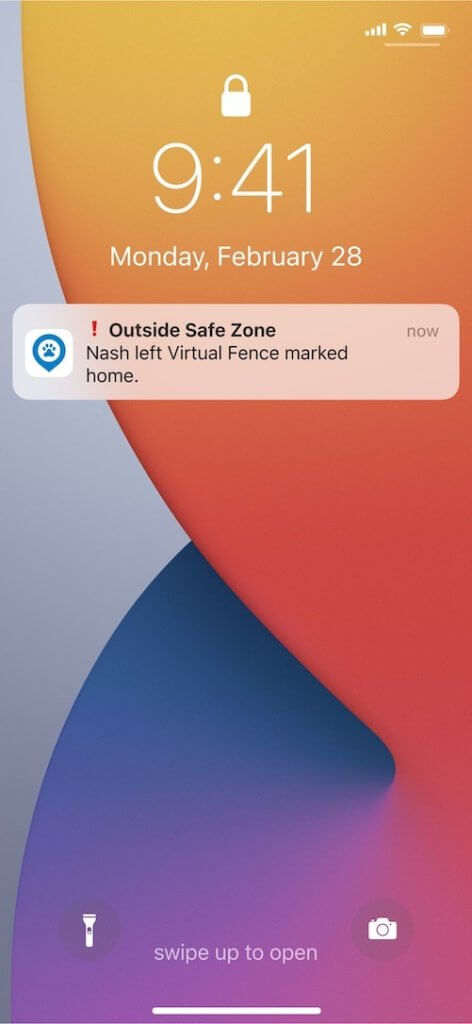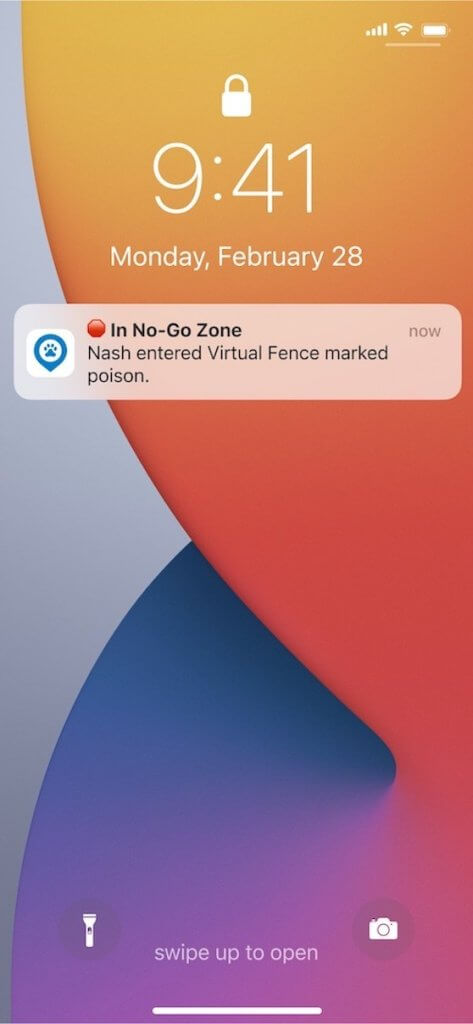4 Important Dog Commands & How To Teach ‘Em
Plus, how to plan ahead for an emergency.
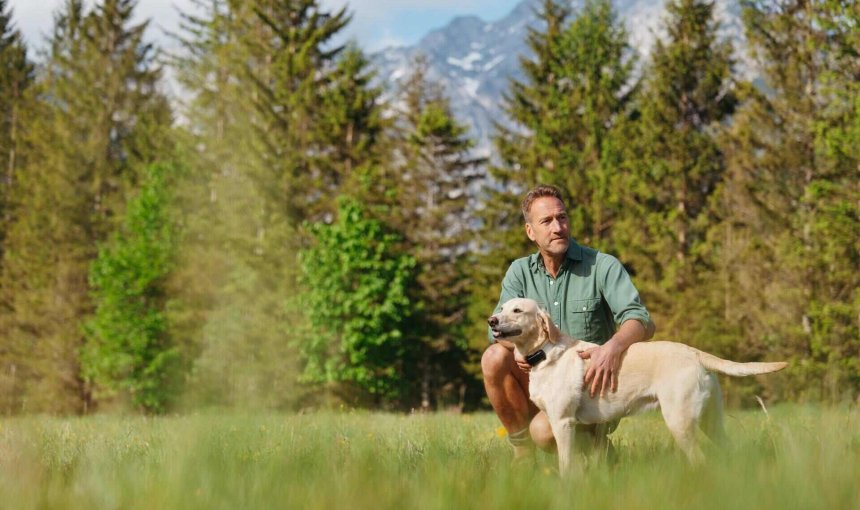
No matter if you have a puppy or an older dog, these are the basic dog commands that every one of them should know. Let’s get started with some of them – and what steps you should take in an emergency if your buddy’s instincts override their training.
Key Takeaways
Learning a few key commands like “sit” and “stay” helps your dog listen to you and stay safe. (Especially when you are out and about.)
The command “Drop it” is a lifesaver because it helps you stop your dog from eating something they shouldn’t, like a dropped pill or a piece of trash on the street.
The “Come” command is one of the most important commands you can teach your dog. It can save them from danger, like running into a busy street or getting lost.
You can use a Tractive smart dog tracker as a backup. It can help you find your dog in real-time if they ever get lost or run off, giving you peace of mind that you can always track them down.

Always know your buddy is healthy & safe
Read more- Key Takeaways
- Basic obedience dog commands could potentially save their life
- The most important dog commands for your buddy
- When should you start teaching these dog commands?
- How often should you train your dog?
- How long should training sessions be?
- Where should I train my dog?
- Do I need to use treats as a reward?
- What to do if your dog’s instincts override their training?
Basic obedience dog commands could potentially save their life
A well-trained dog isn’t just a nice-to-have. In an emergency, their training can potentially save their life from dangerous situations. Whether you take them to the park, to the vet or for a simple walk, there’s no end to the dangers that can occur. Else, they might end up running away just too far from safety – and get lost in the process.
But if you’ve taught your dog some basic obedience commands, your dog is less likely to make a nuisance of themselves outdoors. It’s the most reliable way to keep them safe. Plus, it makes them a good canine citizen at the end of the day.
💡A smart dog tracker with real-time GPS tracking can be an important emergency measure if you’re training a flighty puppy, a dog that spooks easily, or one with a high prey drive. (All reasons a dog can run away.) With just a glance at your phone, you can track their every step in real-time or prevent them from escaping by setting up a “safe zone” around you.

Follow your dog anywhere
Get real-time location information, wherever they go. And find out when they try to make an escape, or just when they go somewhere they shouldn’t, with Virtual Fences.
The most important dog commands for your buddy
In general, we’d also recommend training your buddy a few of these commands 2-3 times per day, for around 5-10 minutes. So keep some treats at hand and let’s teach your dog to…
Sit
Start with your dog in a quiet, familiar environment. (At this point, you both should still be standing.) Hold a treat over your dog’s nose – and then move it slowly in an arc over their head. This should make your dog’s nose follow the treat, which will make them sit down naturally.
When they’re in a seated position, make sure to clearly say, “Sit!” (so they learn to associate the command with the behavior required of them.) Right after, give them a treat, or praise and pat them plenty. Rinse, repeat, and practice thoroughly.
Stay (or Wait)
In a quiet, familiar environment, get your dog in the “Sit” position. Walk away a few steps.
Your dog will most likely try and follow you. That’s where you turn and firmly tell them, “Stay.”
If your dog stops, wait a few seconds – and then give them a treat.
Drop it
Drop It is one of the most fun dog commands to teach during playtime. This works especially if your dog has something (like a ball or a Frisbee) in their mouth already. Now rather than telling them “Drop it!” and waiting for them to magically understand, pop a treat in your dog’s mouth (when they’re already holding something.) This will make your dog drop the object on instinct.
Immediately say, “Drop it!” to help them associate the connection between the command and the behavior.
Come
Get your dog in the “Sit” position – and to “Stay” as you walk away a few paces. Hold out a treat or one of their favorite toys. Tell them “Come!” while gesturing your dog to come to you. (Getting down low can help.) Repeat this until your dog comes to you – and immediately give them a treat.
Read more: Dog Recall: How To Teach Your Dog To Come When Called
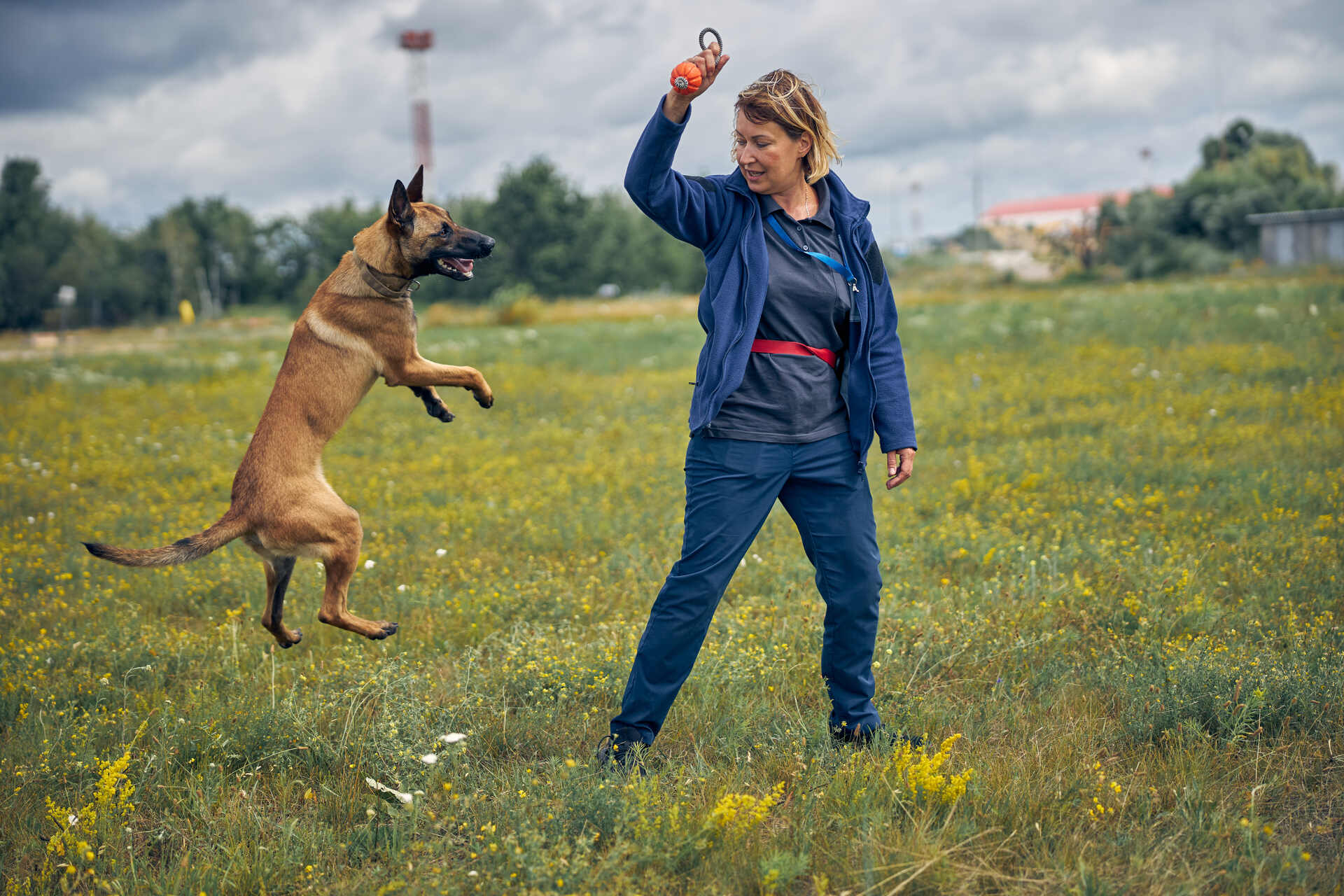
When should you start teaching these dog commands?
The sooner the better. Ideally, the younger your dog, the easier it is to teach them – and the faster they learn. The best time to start training your new puppy, or adult dog, is as soon as you bring them home. Besides, refreshing your dog’s training throughout their life helps keep their brains sharp. But of course, you can always mix it up by teaching them some new commands and more advanced tricks as well – like high-fiving, playing dead, rolling over, or fetching.
💡Got more than one dog at home? Make sure to train them separately – so they learn all the basic dog commands best by themselves.
How often should you train your dog?
Ideally, you should be revisiting and repeating these dog commands daily – or at least as regularly as possible. Even a few minutes of daily training can help your dog behave better and control their impulses when you’re both out and about. Meaning they can more easily socialize at dog parks, be allowed inside cafes and restaurants, and not make a nuisance of themselves outdoors.
So if you’ve just taught your dog a new trick or command, repeat it as often as possible. Go slow and don’t hesitate to switch up the environment for your training sessions.
How long should training sessions be?
Short and sweet – no more than 5-10 minutes, tops. A rule of thumb: practice 15 minutes for a trick and then wait a few hours until you try a new one. Besides, it’s better to do a few 5-minute sessions per day than one 30-minute session with all sorts of commands, back to back. Much like us humans, dogs can also get bored and distracted. Meaning all your effort can go down the drain if you over-train them all in one go rather than distributing it throughout the day.
Where should I train my dog?
If you’re just starting out, somewhere quiet, familiar, and with few distractions (if any.) With time, it’s smart to switch up their training environment. Try somewhere with more “distractions.” So your buddy can learn to focus on you and following your lead in different environments.
Finally, we’d also recommend only training when you’re in a relatively good or neutral mood. If you’ve had a bad day, either take some time off – or focus on an easier command. (Else your poor dog is likely to pick up on your stress.)
Do I need to use treats as a reward?
Nope, not necessarily. Mix up your rewards by going for healthy, low-calorie treats (like dry kibble) – as well as giving your dog plenty of pats and praise or even some extra playtime. Always end your training sessions on a positive note with an exercise you know your dog can do easily. Finishing with success keeps you both motivated!
What to do if your dog’s instincts override their training?
You’ve done your homework, stayed on top of your basic dog commands training…and you can still run into a situation where your dog bolts off the leash because they’ve gotten spooked from a sudden, loud noise or sniffed out a female in heat. Dogs run away for all sorts of reasons, so it makes sense to plan ahead for an emergency. Make sure to:
Inform your neighbors & loved ones in advance
Besides it being a generally nice thing to do, it’ll help if you and your buddy are familiar faces in your neighborhood. Meaning in a missing dog situation, your neighbors can:
- Alert you if they spot your buddy wandering around their backyards or in the neighborhood
- Keep an eye out in case your dog does come wandering back
- Help you actually, physically look for your lost dog
- Spread the word on social media, if necessary
Read more: How To Find A Lost Dog: Tips To Bring Your Missing Dog Home Fast
Make your dog easily identifiable
A collar and ID tag might seem like the bare minimum, but in an emergency, they can work wonders in reuniting you with a lost dog. Besides, if your missing buddy is picked up by a shelter, it now means they can contact you to inform you they’ve found them. But since ID tags can fall off or get smudged, we’d also recommend getting your dog microchipped. It’s a quick, painless, relatively affordable procedure that your vet can perform in under 10 minutes, implanting a microchip between your dog’s shoulder blades.
Use a smart dog tracker as an emergency measure
Whether you’ve got a little firecracker with boundless energy, a skittish rescue who spooks easily, or a pup with a serious prey drive, there’s always a risk they might bolt. A Tractive smart dog tracker is a fantastic safety net to have while you’re working on those basic obedience commands.
Strapped to your dog’s harness or collar, you can now:
Follow your runaway dog’s every step – in real-time
Until your dog has solid recall, a smart dog tracker is your best friend. With Tractive’s real-time GPS tracking, you can follow their every step with live updates right on your phone. If your young, untrained dog gets distracted and wanders off, or if your high-prey-drive pup spots a squirrel and takes off like a rocket, you’ll know exactly where they are. This peace of mind is invaluable, allowing you to focus on training without the constant worry of them getting lost.
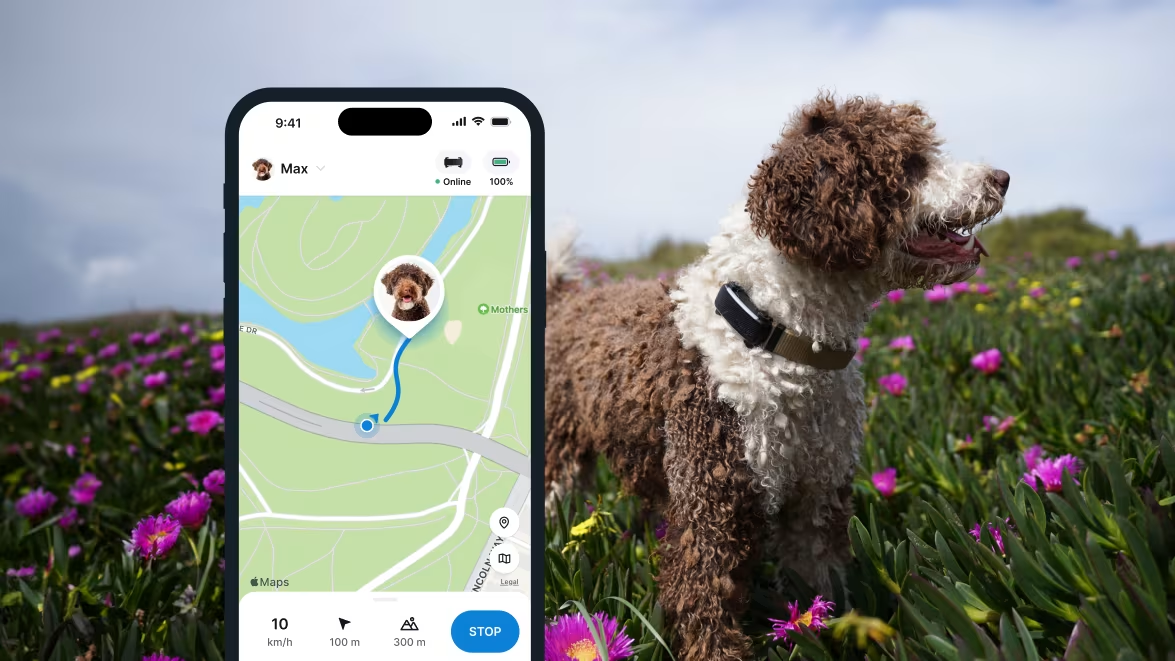
Prevent your dog from escaping
Tractive’s Virtual Fence feature is another incredible training tool. You can set up “safe zones” around your yard, a dog park, or any other area where you’re working on off-leash commands. If your dog crosses that invisible boundary, you’ll get an instant escape alert on your phone. This helps you quickly intervene and reinforce the “stay” or “come” command, building good habits from the start.
